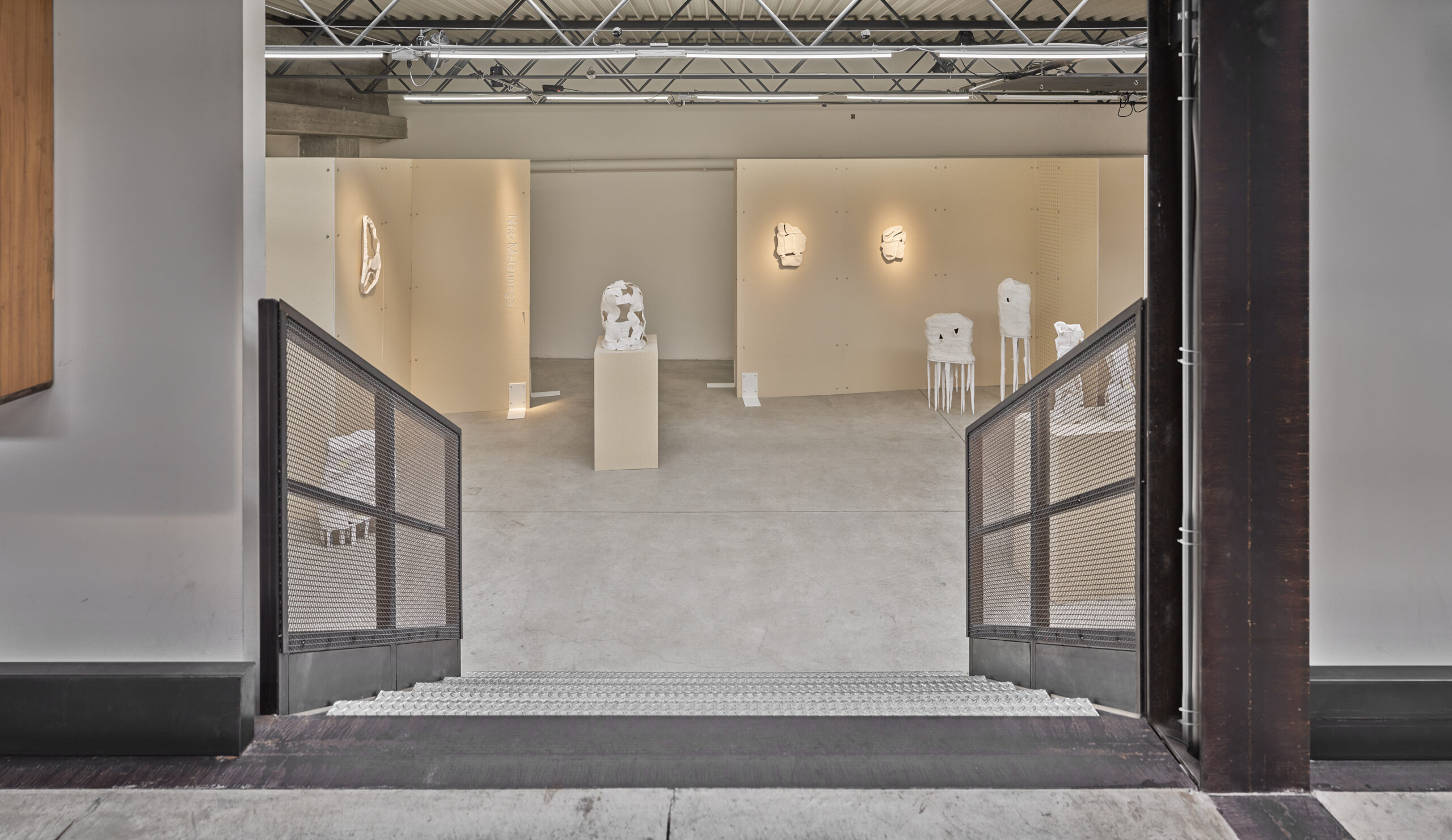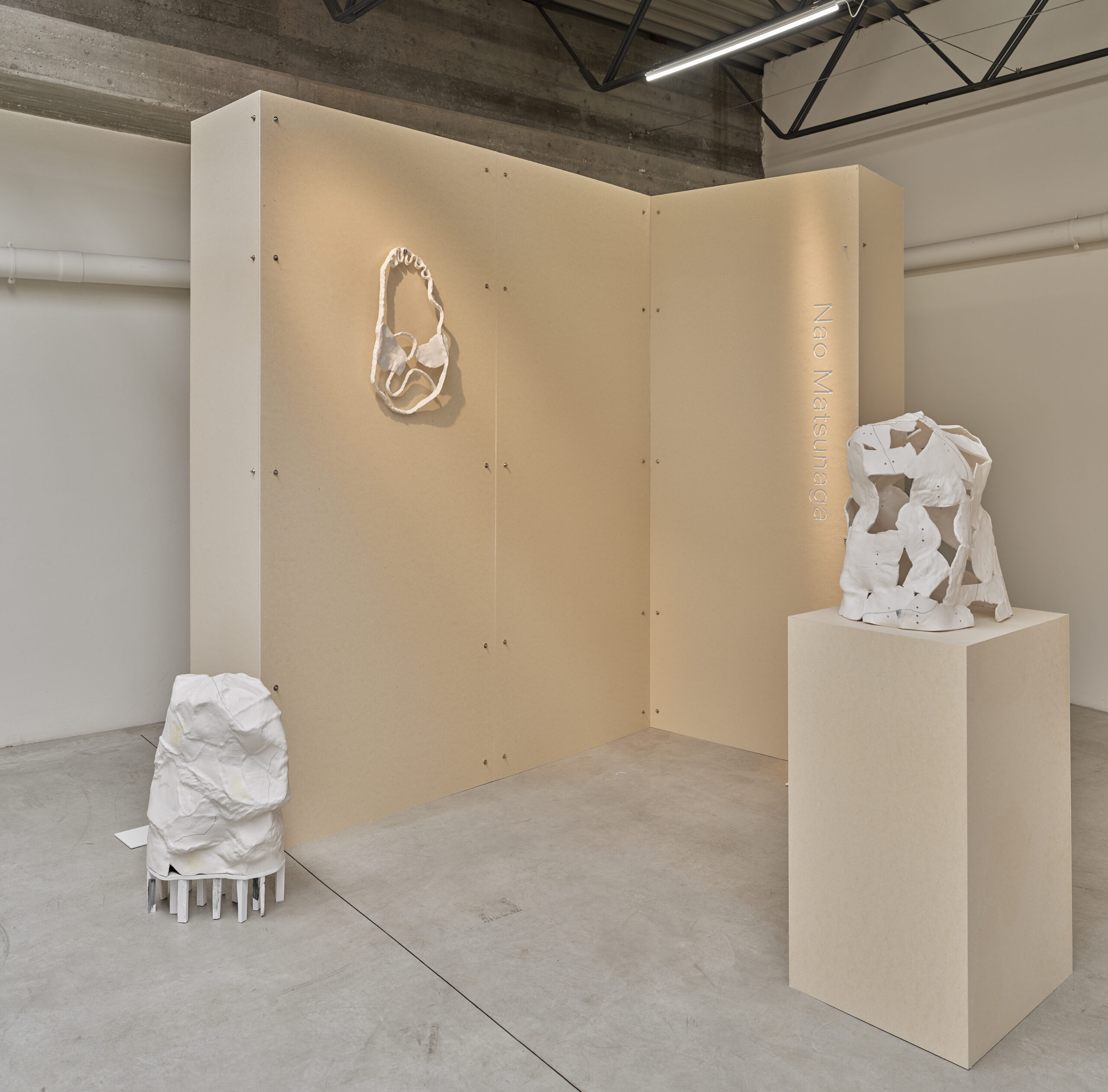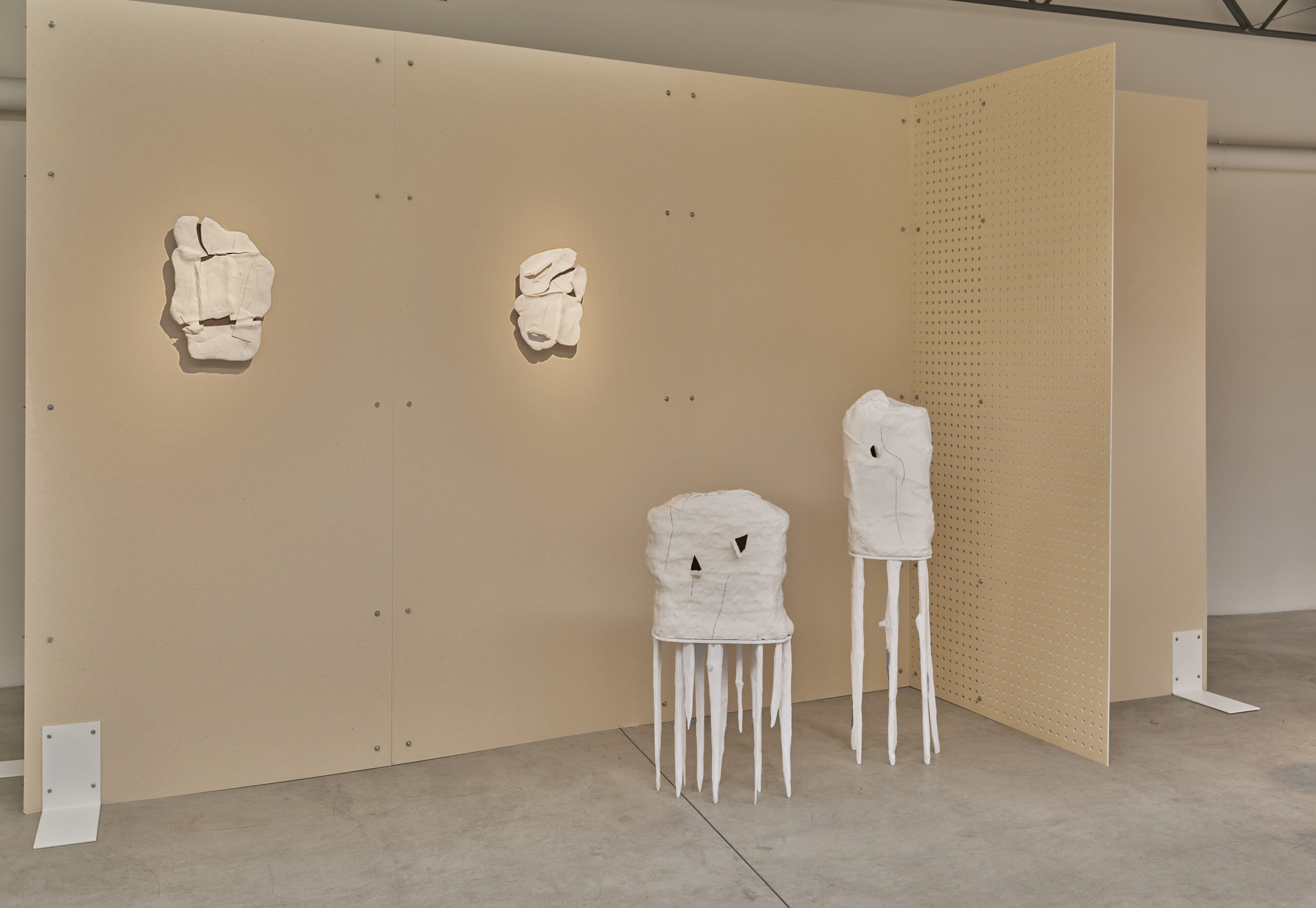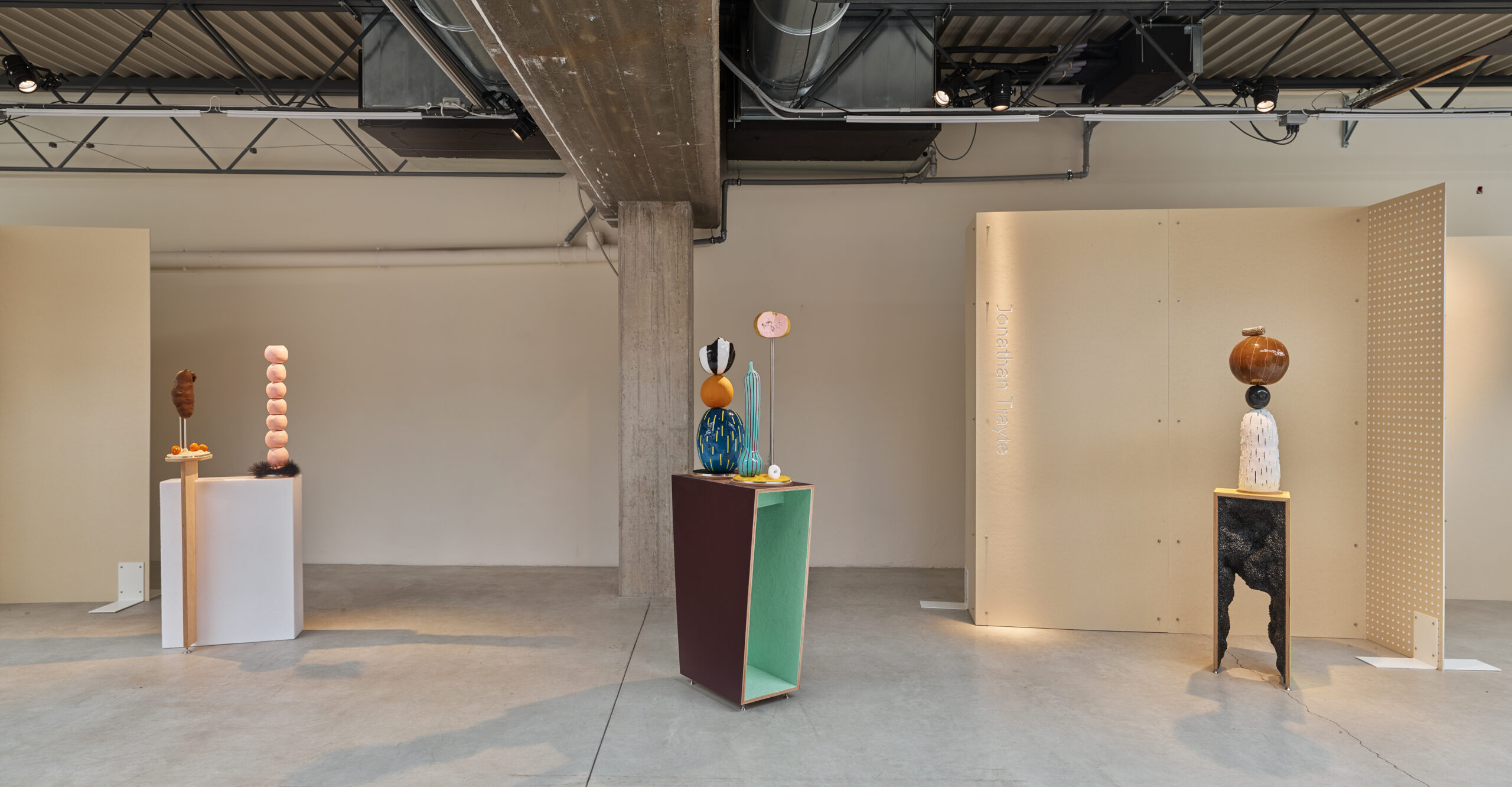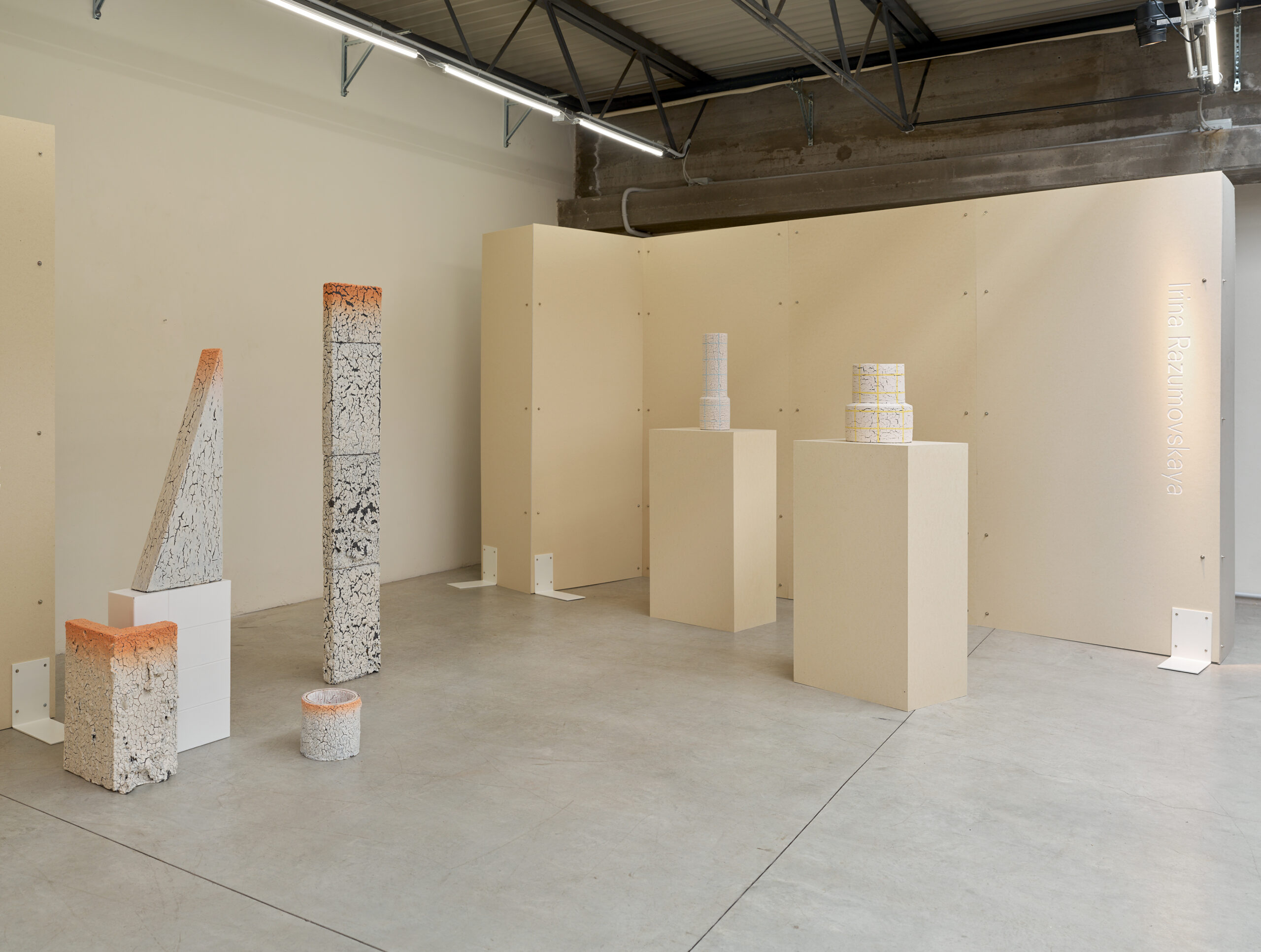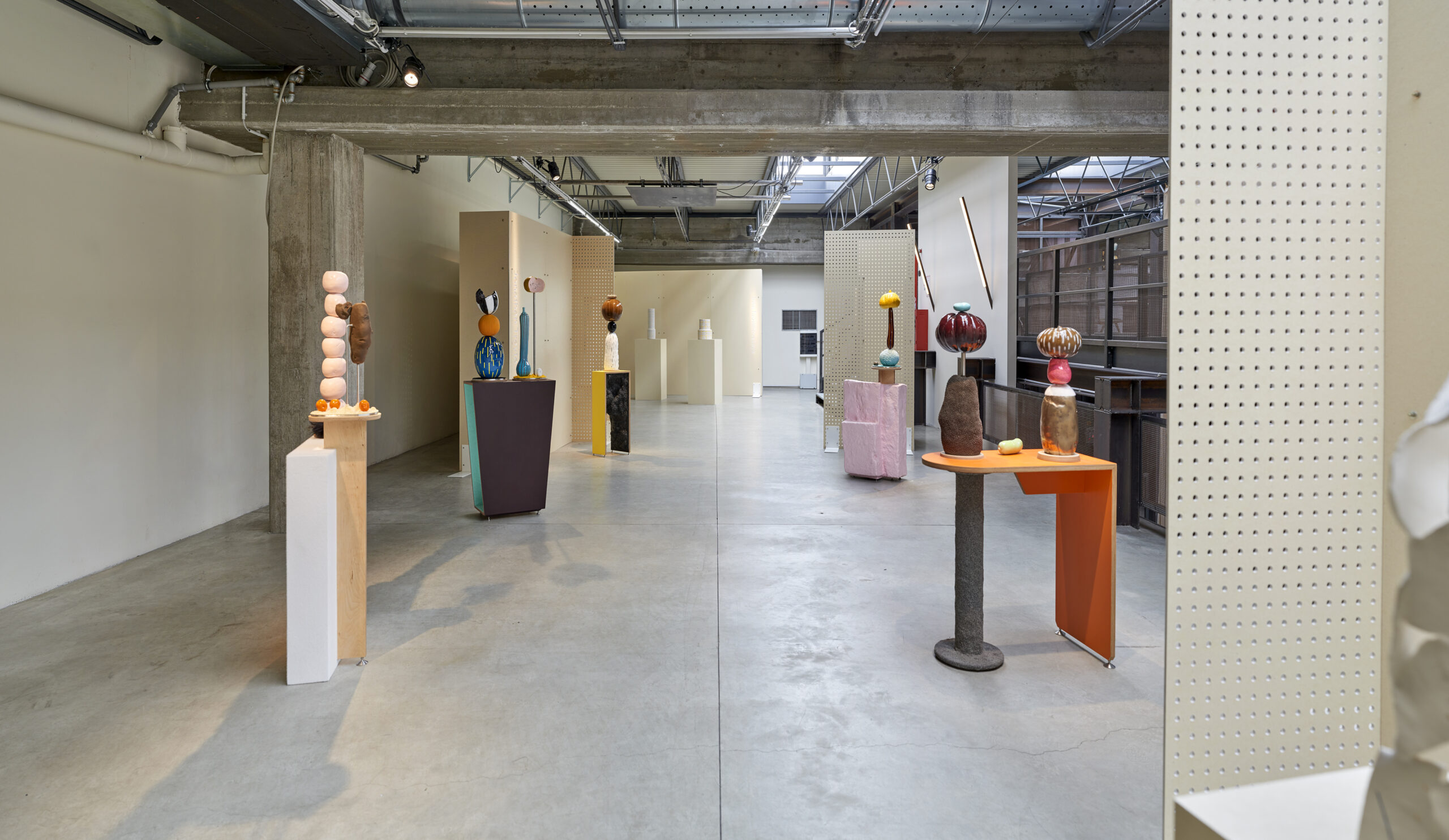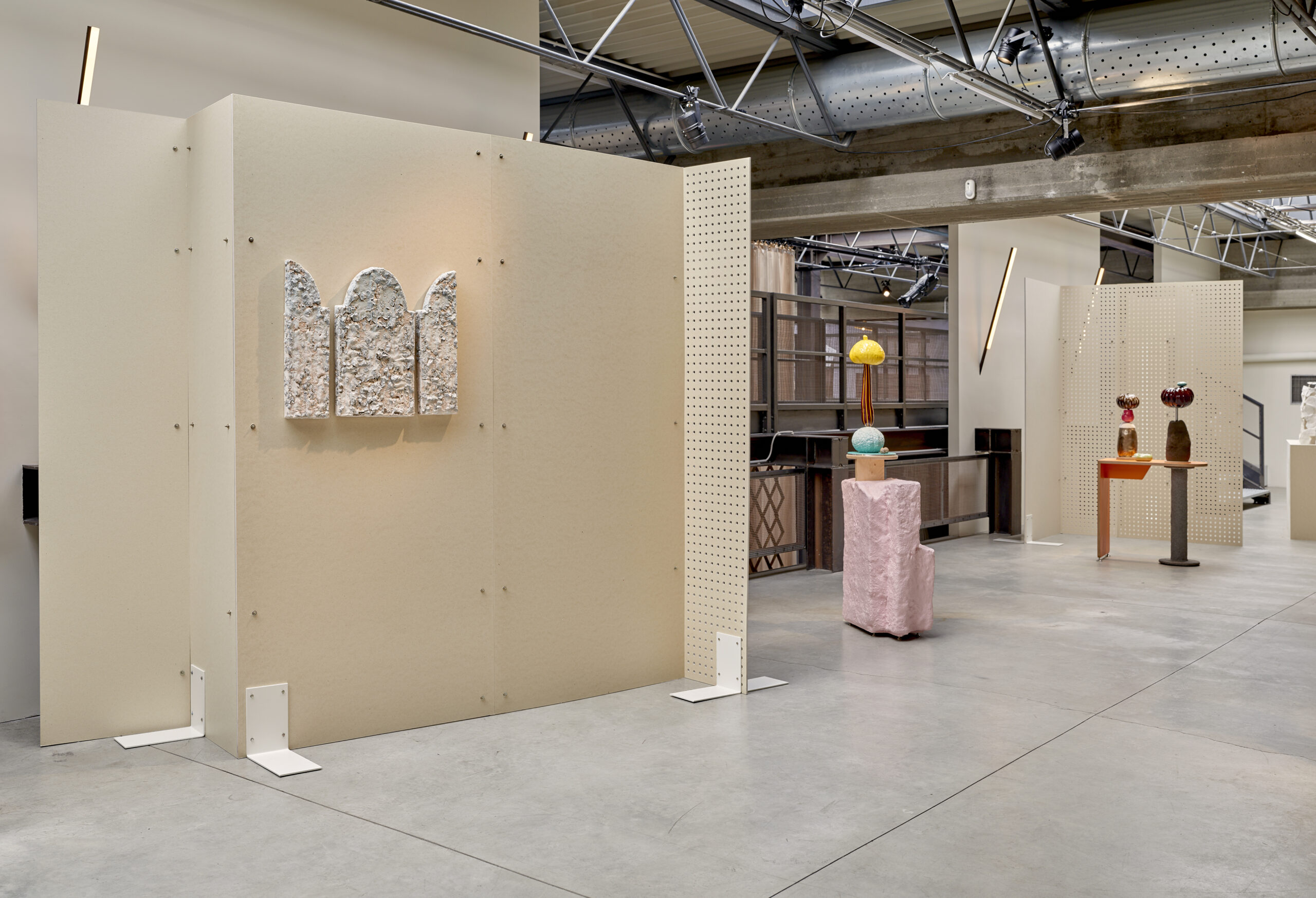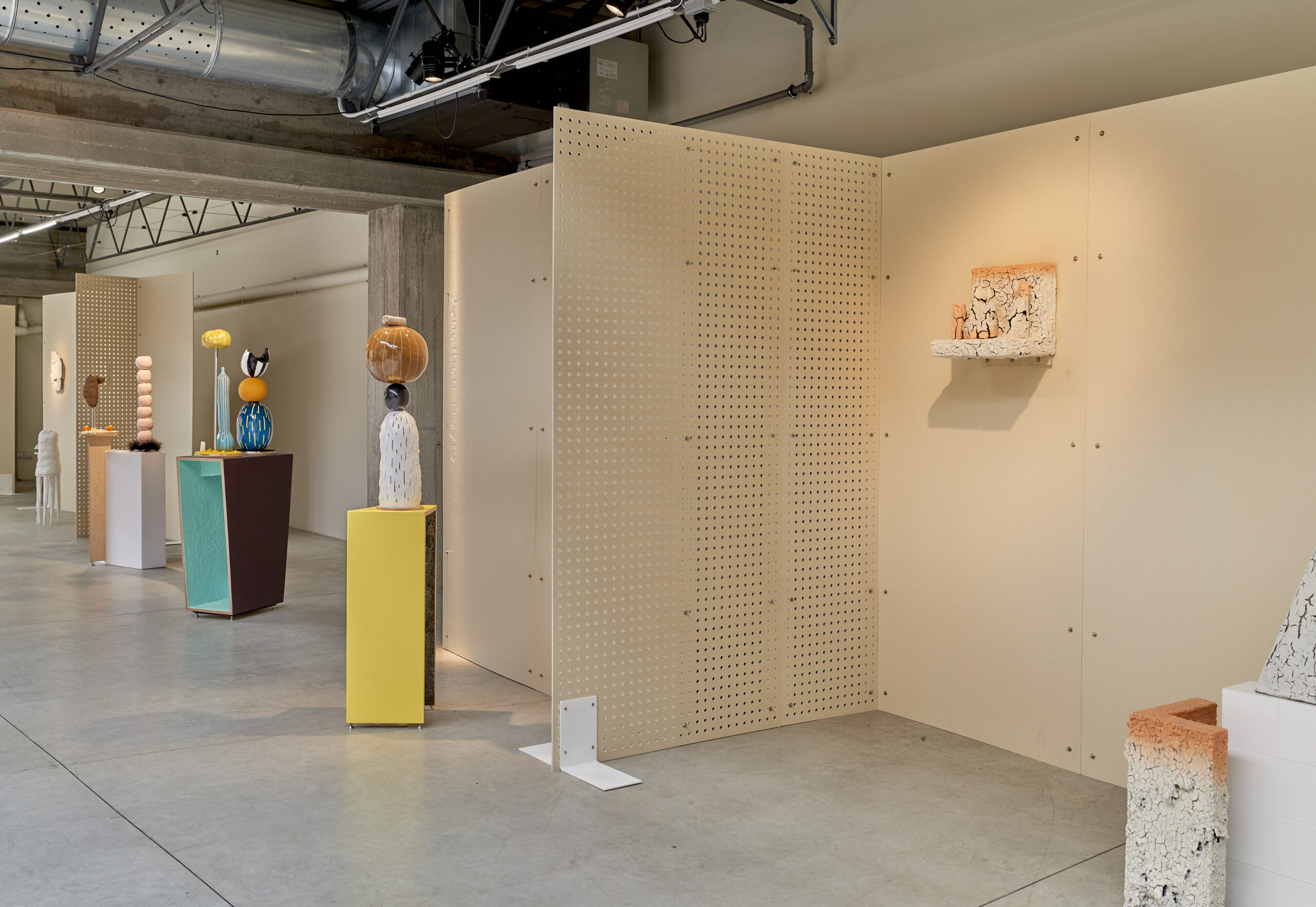As its first, independent sculpture exhibition, New Sculptural Presence marks an exciting development for Nilufar Gallery. Through the work of three contemporary artists – Nao Matsunaga, Irina Razumovskaya and Jonathan Trayte – it brings new languages, references and forms to the gallery’s programming and ongoing commitment to cultural production.
The exhibition’s title is both acknowledgement of this new focus for Nilufar, and a nod to Rose Slivka’s influential 1961 essay for Craft Horizons. Reading the artistic condition of post-war American studio practice, Slivka wrote of a new ceramic presence’; a dynamic sculptural incursion that shared the same vitality and autonomy as abstract expressionism.
While Slivka’s paean specifically focused on mid-century ceramics, distinct parallels can be made with the artists in New Sculptural Presence the most pertinent being their impassioned experimentalism, technical acuity and an increasing interestin surface tension.
Set within his context, each artist was chosen for their adroit handling of materials be it clay, concrete, wood or cast bronze. Matsunaga intuitively responds as the natural properties reveal themselves through his working process, Razomovskaya balances control and surrender in equal measure, and Trayte carefully governs each crevice and brush stroke. Between them they draw from an equally diverse range of cultural references: from primitive nations and rituals, though historical archetypes, to today’s over consumption and excessive production. The breadth and mental dexterity behind their respective practices illustrates the confidence with which today’s artists embrace plurality. Which, in Slivka’s words, adds ‘new meaning sand possibilities to old functions and habits of seeing’.
Photo credits by Pim Top
